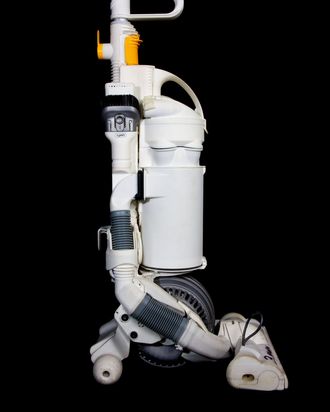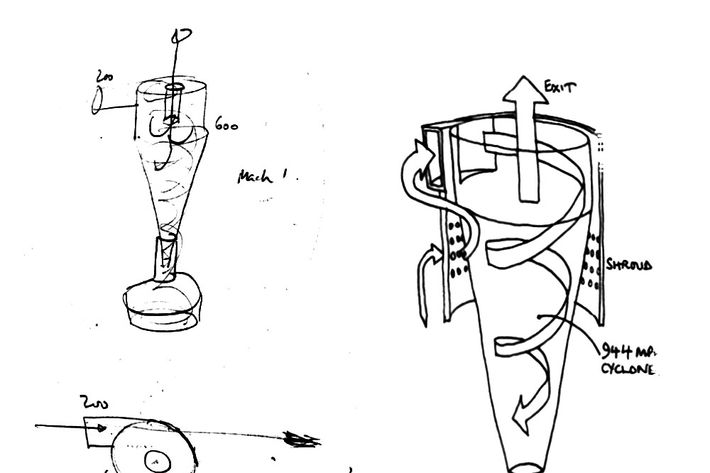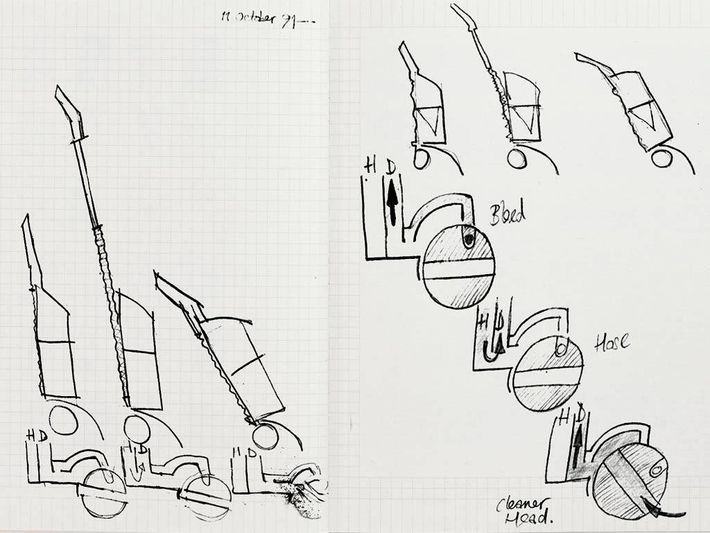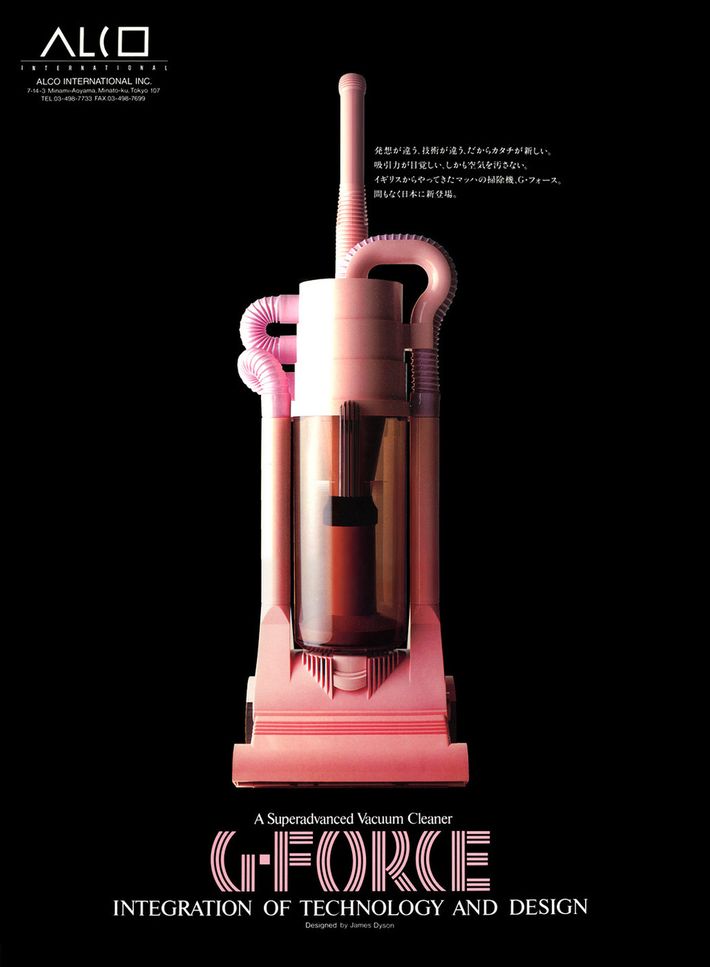
You can’t Google the word “vacuum” without seeing the name Dyson. Since their introduction to market in the early ’90s, the company’s devices have become known as top-of-the-line products to suck the dust from your carpet. Whether it’s their innovative bagless technology, vibrant colored plastic, or those commercials where a soothing British voice speaks in hushed tones until you agree with just about anything it says, Dyson vacuums have acquired a sort of rarefied ubiquity, revered in the way your grandmother used to talk about her Hoover, if her Hoover was a Tesla.
Today, the company’s founder and namesake, Sir James Dyson, has an estimated net worth of $4.6 billion. Not a bad deal for someone who 20 years ago was just a guy with a game-changing idea for a better vacuum — that he couldn’t sell to a manufacturer if he tried. And trust him, he tried.

Dyson’s journey to the top of Vacuum Mountain began in in 1978, when he decided there had to be a way to build a better device than the popular vacuums of the day. “I started Dyson with an idea: a bagless vacuum that didn’t lose suction. It seemed so simple — bagged vacuums begin to lose suction as soon as they fill with dust,” he told New York. “So, I invented a vacuum that didn’t rely on bags, and cyclone technology meant the vacuum wouldn’t lose suction.” Sound familiar?
The idea came to him after seeing a local sawmill which used a 30-foot-high conical centrifuge that would spin dust out of the air. The same technology, Dyson reckoned, could be shrunk down and built into a vacuum cleaner, omitting the need for a bag and ensuring the device wouldn’t lose suction and become less useful over time.
Easier said than done, of course. Dyson would spend the next 15 years perfecting his design, a process that resulted in 5,127 different prototypes. Those years were tough for the fledgling inventor and his family. “By 2,627, my wife and I were really counting our pennies,” Dyson wrote in 2011. “By 3,727, my wife was giving art lessons for some extra cash.”
“She was wonderful. But most other people thought I was mad,” he told Inc. Still, Dyson knew he had something potentially great on his hands and pushed on. “It didn’t happen overnight, but after years of testing, tweaking, fist-banging, and after more than 5,000 prototypes, it was there,” he said. “Or nearly there. I still needed to manufacture it and go sell it.”

“It” was the earliest iteration of the DC01, the first upright vacuum cleaner with his patented cyclone technology, which Dyson would bring to market in the United States. You know the one. Yellow. Clear canister where you could see all the dust and dirt accumulate. The famous one. With his now-working design, Dyson thought licensing the idea to a company would be simple enough. After all, who wouldn’t want to buy into a product so markedly more effective than anything else on the market? The answer: Everybody.
“I was young and, in hindsight, idealistic, to think that the big vacuum manufacturers would jump at the chance to license my idea,” Dyson told New York. “I had visions of a vacuum revolution. Reality was something different.” Dyson spent the next three years traveling the world and trying, unsuccessfully, to sell his dang vacuum. “These vacuum makers had built a razor-and-blade business model reliant on the profits from bags and filters. No one would license my idea,” he explained. “Not because it was a bad one, but because it was bad for business.”

The companies that turned him down were right about one thing, it was a good idea. Despite his inability to sell the idea to a large-scale manufacturer and an attempted licensing with a United States company which he called a “disaster,” in the mid-’80s Dyson was able to produce and sell his vacuum with the help of a small licensing company called Apex Limited. The “G-Force” was made of hot-pink plastic, sold for $2,000, and was only available in Japan. The pricey device (which also converted to double as a tabletop to save space) became something of a status symbol and won the 1991 International Design Fair in Japan. Sales there helped Dyson head off on his own and found the Dyson company in 1993. “I finally understood that if I wanted the technology out there, I’d have to do it myself,” he told New York.
The rest is vacuum history. That year, Dyson set up his own shop in Cotswolds, England, and grew a business that quickly became a household name in the United Kingdom and later the world. And not just for vacuum cleaners. If you’ve ever run your hands between one of those fancy hand-dryers in a movie-theater bathroom, you’ve used a Dyson product. (The makes-your-skin-ripple-like-your’re-standing-behind-a-jet-engine kind, not the lame, press-a-button-and-hold-your-hands-under-a-sad-stream-of-hot-air kind.) The company would later roll out a vacuum engineered around a ball shape, to make it easier to maneuver. A washing-machine project was scrapped in 2012 after the company lost too much money on it, and this year Dyson ventured into beauty with a $400 supersonic hair dryer, in a shade evocative of the company’s OG Japanese vacuum.
Today, Dyson says he still embraces risk and the potential for failure as part of the process, particularly when it comes to his employees. “Nothing beats the thrill of invention. Letting people go out and try their ideas, getting them totally involved, and unleashing new thinking,” he says. “They’re not bound to any methodology — in fact, the stranger and riskier, the better.”
As for the companies who turned him down decades ago, to speak in blunt vacuum terms, it sucks to be them. In 2002, Hoover was forced to pay Dyson over $4.2 million following a years-long patent-infringement lawsuit. A court found that Hoover’s Triple Vortex vacuums were a blatant attempt to copy Dyson’s design, the same cyclone technology he offered to sell Hoover a decade earlier.